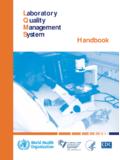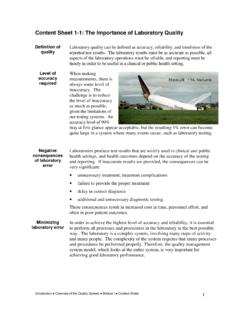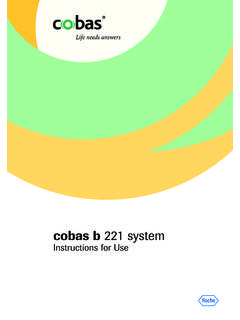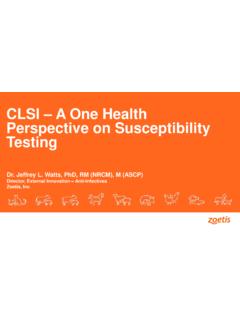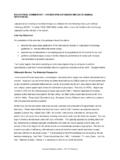Transcription of Step-by-step approach for - World Health …
1 Step-by-step approach for development and implementation of hospital antibiotic policy and standard treatment guidelinesSEA-HLM-414 Distribution: General World Health Organization 2011 All rights reserved. Requests for publications, or for permission to reproduce or translate WHO publications, whether for sale or for noncommercial distribution, can be obtained from Publishing and Sales, World Health Organization, Regional Office for South-East Asia, Indraprastha Estate, Mahatma Gandhi Marg, New Delhi-110 002, India (fax: +91-11-23370197; e-mail: publications@ ).The designations employed and the presentation of the material in this publication do not imply the expression of any opinion whatsoever on the part of the World Health Organization concerning the legal status of any country, territory, city or area or of its authorities, or concerning the delimitation of its frontiers or boundaries.
2 Dotted lines on maps represent approximate border lines for which there may not yet be full mention of specific companies or of certain manufacturers products does not imply that they are endorsed or recommended by the World Health Organization in preference to others of a similar nature that are not mentioned. Errors and omissions excepted, the names of proprietary products are distinguished by initial capital reasonable precautions have been taken by the World Health Organization to verify the information contained in this publication. However, the published material is being distributed without warranty of any kind, either expressed or implied. The responsibility for the interpretation and use of the material lies with the reader. In no event shall the World Health Organization be liable for damages arising from its publication contains the collective views of an international group of experts and does not necessarily represent the decisions or the stated policy of the World Health in IndiaiiiStep-by- step approach for development and implementation of hospital antibiotic policy and standard treatment guidelinesContentsList of abbreviations ivIntroduction 1.
3 1 Antibiotic policy 2. 6 Surveillance of antimicrobial resistance 13. 3 Cumulative antibiogram 14. 8 Development of standard treatment guidelines 25. 1 Strategies for promoting rational antibiotic prescribing 26. 6A model standard treatment guideline 7. for community-acquired pneumonia at the hospital level 30 Antimicrobial stewardship 38. 5 Further reading 39. 9 AnnexesContributors 41. 2 Technical resources 42. 3ivStep-by- step approach for development and implementation of hospital antibiotic policy and standard treatment guidelinesList of abbreviationsABC Calc antibiotic consumption calculator AMR antimicrobial resistanceAMT antimicrobial team ARIMA auto-regressive integrated moving average ATC anatomic therapeutic chemicalATS American Thoracic SocietyBSAC British Society for Antimicrobial ChemotherapyCAP community-acquired pneumoniaCDC Centers for Disease Control and Prevention (Atlanta)
4 CLSI Clinical and Laboratory Standards InstituteCWA community-wide antibiogramsDDD defined daily doseEPOC effective practice and organization of careEQAS External Quality Assessment SchemeEUCAST European Committee on Antimicrobial Susceptibility TestingHAI Health -care associated infection ICU intensive care unitIDSA Infectious Diseases Society of AmericaKPC Klebsiella pneumoniae carbapenemase MIC minimum inhibitory concentrationMRSA methicillin-resistant Staph aureusNABH National Accreditation Board for HospitalsNABL National Accreditation Board for LaboratoriesPDD prescribed daily doses SCA Science Computing Associates SHEA Society for Healthcare Epidemiology of America STG standard treatment guidelinesSTRAMA Swedish Strategic Programme Against Antibiotic ResistanceWHO World Health OrganizationStep-by- step approach for development and implementation of hospital antibiotic policy and standard treatment guidelinesAntimicrobial resistanceAntimicrobial resistance (AMR) has emerged as a major public Health problem all over the World .
5 Infections caused by resistant microbes fail to respond to treatment, resulting in prolonged illness and greater risk of death. Treatment failures also lead to longer periods of infectivity, with increased numbers of infected people moving in the community. This in turn exposes the general population to the risk of contracting a resistant strain of microorganisms. When these become resistant to first-line antimicrobials, the prohibitive high cost of the second-line drugs may result in failure to treat these diseases in many individuals. Most alarming of all are the diseases caused by multidrug-resistant microbes, which are virtually non-treatable and thereby create a post-antibiotic era 1: Emergence of resistance and hospital cross-infectionsIntroduction12 Step-by-step approach for development and implementation of hospital antibiotic policy and standard treatment guidelinesAntimicrobial resistance in Health -care associated infections (HAI)AMR has assumed greater importance in Health -care settings.
6 The presence of compromised individuals in an environment with a variety of infectious agents which are continuously under heavy antibiotics pressure results in the emergence and spread of resistant organisms to other patients in the form of cross-infection (Fig. 1). The size of the ageing population is also on the rise, leading to an increasing number of individuals living with immunocompromised states. Such people spend more and more amounts of time in hospitals or long-term care facilities. These patients will be at risk for morbidity and mortality associated with HAI. Further, there is an association between the development of resistance in Staphylococcus aureus, enterococci, and Gram-negative bacilli and an increase in mortality, length of hospitalization, and the cumulative cost of Health care. This attributes to inappropriate, inadequate or delayed therapy. Strategies to prevent the emergence and spread of Health -care associated antimicrobial-resistant organisms are epidemiologists are still grappling with problems associated with preventing the spread of multidrug-resistant aerobic Gram-negative bacilli in Health -care settings; implementing effective strategies to ensure antimicrobial stewardship; preventing the spread of multidrug-resistant S.
7 Aureus (MRSA) infection in Health -care settings; and developing effective strategies to ensure adherence to hand hygiene standards. An effective strategy to limit the effect of multidrug resistance must be multifaceted and must include the education of patients and physicians about appropriate drug, dose and duration, use of effective infection-control practices to prevent transmission from infected to uninfected patients, surveillance of antimicrobial resistance and antimicrobial use, and improved use of immunization. The campaigns should be undertaken to educate the public about the dangers of antimicrobial resistance and what may be done to control approach for development and implementation of hospital antibiotic policy and standard treatment guidelinesAvailability of new antimicrobial agentsThe situation on the development of new antimicrobial agents is not very encouraging. Hardly any promising agents are in the pipeline for treatment of some common multidrug-resistant nosocomial organisms commonly grouped under acronym of ESKAPE: E nterococcus faecium (vancomycin-resistant enterococci-VRE).
8 S taph aureus (methicillin-resistant Staphylococcus aureus-MRSA).K lebsiella and Escherichia coli that are producing extended spec-trum beta-lactamases (ESBL) enzymes and cinetobacter seudomonas nterobacter solution to the current approaches to antimicrobial resistance is to preserve the effectiveness of the drugs presently available by antibiotic stewardship and to maximize hospital infection-control practices, to limit the spread of against antimicrobial-resistant microorganisms in hospitalsStrategic objectives To develop a system to recognize and report trends in antimicrobial resistance within the develop a system to rapidly detect and report resistant microorganisms in individual patients and ensure prompt assure increased adherence to basic infection control policies and incorporate the detection, prevention and control of antimicrobial resistance into institutional strategic goals and provide the required resources.
9 4 Step-by-step approach for development and implementation of hospital antibiotic policy and standard treatment guidelinesTo develop a plan for identifying, transferring, discharging and readmitting patients colonized with specific antimicrobial-resistant establish policy and practices for rational use of anti- approachesOptimizing the duration of choice and dose of empiric therapy: antimicrobial antimicrobial prophylaxis for operative proce- and implementing an antibiotic policy and standard treatment guidelines (STG).Monitoring and providing feedback regarding antibiotic antimicrobial prescribing by educational and administrative achieve these, a comprehensive approach through a hospital policy on the rational use of antibiotics is of the documentThis document focuses on the mechanism to develop a practically applicable hospital antibiotic policy and standard treatment guidelines (STG).
10 In addition, the document contains information on various effective strategies for implementation of STG. It also discusses various activities and information required for the development of the antibiogram, antibiotic policy and standard treatment guidelines, such as surveillance programmes, the cause and controlling strategies for AMR and HAI; performance measures of antibiogram, antibiotic policy and standard treatment guidelines. A model hospital STG for community-acquired pneumonia in adults is included. The figure below ( ) summarizes the process for the development of antibiotic policy as well as the standard treatment guidelines in a hospital setting. 5 Step-by-step approach for development and implementation of hospital antibiotic policy and standard treatment guidelinesFigure 2: Process for the development of hospital antibiotic policyThe document elaborates all these development processThe WHO Regional Office for South-East Asia commissioned the Christian Medical College and Hospital, Vellore, India, to develop the first draft of the guidelines.










